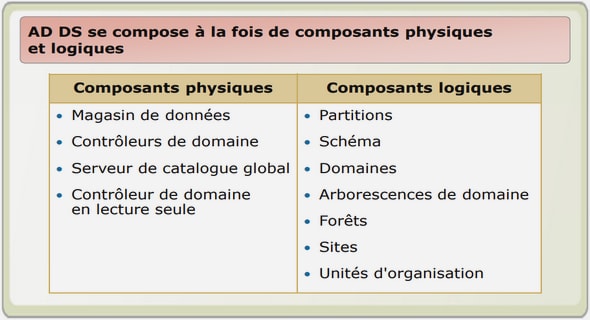Get Complete Project Material File(s) Now! »
Biofunctionalisation
Biomolecule conjugation is also an important consideration; the surface of the particle requires specific functional groups for the coupling reactions which usually link to specific amino acid residues (lysine, cysteine, or tyrosine) present at the surface of the biomolecule. The structure of the polymer may inherently feature the required groups; otherwise additional components must be mixed in or applied to the surface of the particle.
Magnetic Particle Limitations
Other limitations relate to the reactivity of particles. For colloids such as grafted magnetic particles, reaction kinetics of are directly correlated to their size. Magnetic particles can rapidly be brought into contact with a reaction site. Rotational diffusion however, is still required at close distances for a grafted ligand to bind to its receptor (needing a specific orientation). For larger particles these motions become very small greatly increasing the reaction time.
This problem is aggravated by anisotropy of size and distribution of the embedded magneti particles, creating an easy axis of magnetisation within the microparticle. Under an applied field, the
particle will rotate to align itself with this axis, maintaining this orientation until the field is removed. This alignment restricts Brownian rotation, so even if the particle is brought near to a captured analyte, discord between the position of its ligands and its orientational preference can prevent reactions from occurring (see Figure 1.5). This effect is present even for relatively small magnetic beads; evidence of this is shown in the Magnotech system [11] where actuation of beads close to the surface is necessary to encourage efficient capture.
The Nature of the Dispersed Phase
As discussed previously, the nature of the oil has a strong influence in the destabilisation mechanisms through its density relative to the continuous phase as well as its solubility. Preference will be given to oils with a higher molecular weight since chain length is inversely proportional to aqueous solubility (see 2.2.3) [56]). The dispersed phase is also important because it usually constitutes the functional or active part of the emulsion. In drug delivery for example, the dispersed oil phase is used to dissolve and transport lipophilic compounds to their target.
The dispersed phase is not limited to simple liquids, interesting and complex materials can be made by emulsification of colloids, or even emulsions (to create multiple emulsions). In this project, along with the ligands, a colloidal dispersion of superparamagnetic nanoparticles (a ferrofluid) will be introduced into the dispersed phase to give the droplets a magnetic character.
Limitations of Microfluidic Emulsification
Despite the advantages offered by microfluidic emulsification, there are a number of limitations which should be taken into consideration:
Solvent Compatibility: The drawback of microchannel emulsification is that the commonly used PDMS elastomer exhibits a limited material compatibility. Certain solvents infiltrate and swell the PDMS elastomer, this swelling was recently demonstrated to be related to the solubility parameter ratio of the elastomer and the solvent, a higher ratio results in less swelling [77]. Naturally, even a small amount of swelling is disastrous for a device where monodisperse production is dependent upon the geometry. A change in the channel dimensions will result in a change the size of the droplets produced. Swelling will be controlled by testing oil compatibility. Surface Treatment: Microchannel/step emulsification requires that the channel surface and the dispersed phase have opposite affinities (i.e. O/W emulsions, the channels should be as hydrophilic as possible) to minimise wetting by the dispersed phase. During plasma bonding, PDMS is initially rendered hydrophilic during the plasma treatment of the bonding process. Over time the hydrophilicity diminishes as the Si-O bonds reform, allowing the oil to wet the surface.
To maintain the hydrophilicity, the PDMS surface can be treated with the hydrophilic polymer polyvinylpyrrolidone (PVP K90) shortly after plasma treatment [78], which reacts with the surface and provides a hydrophilic steric barrier. In brief, after bonding, the chip is flushed with a 3 %w/v solution of PVP for 2 hours. Excess PVP is rinsed away using water (2 hrs). Finally, the chip is dried overnight using airflow (protocol developed in group by Ladislav Derzsi). A bonded and surface treated chip can be seen in Figure 2.19.
Table of contents :
Introduction
Colloids in Chapter 1 Biotechnology
1.1 Materials Science & Biotechnology
1.1.1 Colloidal Materials
1.2 Magnetic Particles
1.2.1 Structure & Properties
1.2.2 Magnetic Particle Applications
1.2.3 In Vivo Biomedical Applications
1.2.4 Microbeads & In Vitro Technologies
1.2.5 Examples of Magnetic Bead Based Technologies
1.3 Materials Perspective
1.3.1 Synthesis of Magnetic Particles
1.3.2 Particle Stability
1.3.1 Biofunctionalisation
1.3.2 Magnetic Particle Limitations
1.4 Liquid Particles
1.4.1 Types of Liquid Particle
1.4.2 Technological Applications
1.4.3 Biofunctionalisation
1.4.4 Magnetic Emulsions
1.5 Novel Magnetic Particles for Bioassays
Chapter 2 Emulsions & Formulation
2.1 Definition, Requirements & Types
2.1.1 Emulsion Stability
2.1.2 States of Emulsification
2.1.3 Project Implications
2.2 Surfactants & Stability
2.2.1 Surfactant Function
2.2.2 Surfactant Types
2.2.3 Phospholipids
2.2.4 Micelle Formation
2.2.5 Reversibility
2.2.6 The Bancroft Rule
2.2.1 Hydrophobic Lipophilic Balance
2.2.2 Pickering Emulsions
2.3 The Nature of the Dispersed Phase
2.3.1 Ferrofluids
2.4 Quantifying Emulsions
2.4.1 Volume Fraction
2.4.2 Mean Size & Size Distribution
2.4.3 Light Scattering
2.5 Creating an Emulsion
2.5.1 Emulsification Theory
2.5.2 Emulsification Techniques
2.6 Membrane & Microchannel Emulsification
2.6.1 Membrane Emulsification
2.6.2 Microchannel Emulsification
2.6.3 Microfluidic Chip Fabrication
2.6.1 Limitations of Microfluidic Emulsification
2.7 Emulsions & Formulation Conclusion
Chapter 3 Formulation Results
3.1 Introduction
3.2 Preparation of a Bulk Emulsion
3.2.1 Using a Cosurfactant
3.2.2 Preparation of a Bulk Emulsion
3.2.3 Emulsion Stability
3.2.4 Phospholipid Preparation
3.2.5 Visualisation of the Phospholipids
3.2.6 Poloxamer Stability Testing
3.2.7 Bulk Formulation Summary
3.3 Microfluidic Emulsification Results
3.3.1 Oil compatibility & Swelling
3.3.2 Surfactant Limits
3.3.3 Glass Chip
3.3.4 Calculating droplet concentration
3.3.5 Functional Droplets
3.3.6 Overall Microfluidic Formulation
3.4 The Ligand/Receptor Pair
3.4.1 Buffers & pH
3.5 Adding Ligands to the Interface
3.5.1 Measuring Protein Capture
3.5.2 Kinetics of Capture
3.5.3 Effects of PEG Spacer Length and Cosurfactant PEG Length
3.5.4 Quantifying Streptavidin Capture
3.5.5 Effect of Ligand Concentration
3.5.6 Ligands – Conclusion
3.6 Evidence of Fluidity
3.6.1 Adhesion Plaque Formation
3.6.2 Bead Capture & Mobility
3.6.3 Interfacial Fluidity Conclusion
3.7 Magnetic Content – Ferrofluid
3.7.1 Preparation of the ferrofluid
3.7.2 Ferrofluid Stability
3.7.3 Consequences of Aggregation
3.8 Formulation Results Summary
Chapter 4 Application – Agglutination Assay
4.1 Introduction
4.2 In Vitro Diagnostics & Particle Assays
4.2.1 Biomarkers
4.2.2 Bioassays & IVD
4.2.3 Targeting Biomarkers
4.2.4 Affinity Assays
4.2.5 Affinity Assay Limitations
4.3 Magnetic Particle Based Assays
4.3.1 Magnetic ELISA
4.3.2 Magnetic Agglutination:
4.3.3 Magnetic ELISA versus Magnetic Agglutination
4.3.4 Magnetic Particle Limitations for Agglutination
4.3.5 Emulsions as an Assay technology
4.4 Bulk Agglutination
4.4.1 Bulk Agglutination Conclusion
4.5 Flow Cytometry
4.5.1 The Flow Cytometer
4.5.2 Differentiation of population by size
4.5.3 Advantages of Flow Cytometry
4.5.4 Flow Cytometry Limitations
4.6 Flow Cytometry and Emulsions
4.6.1 Aggregation of the Bulk emulsion
4.6.2 Limitations of Measuring Emulsions
4.6.3 Conclusion
4.7 Measuring Agglutination using Flow Cytometry
4.7.1 3 μm M270 Streptavidin Beads
4.7.2 Reaction Protocol
4.7.3 Limit of Detection
4.7.4 1 μm Dynal MyOne Carboxy Streptavidin Beads
4.7.5 40 nm FS40 Neutravidin FluoSpheres
4.7.6 Streptavidin
4.7.7 Cytometric Agglutination Summary
4.8 Agglutination Conclusion
Chapter 5 Conclusion & Perspectives
5.1 Conclusion
5.1.1 Formulation & Production
5.1.2 Particle Application- Agglutination Assay
5.2 Perspectives
5.2.1 Agglutination measured by Flow Cytometry
5.2.1 Alternative Applications
Materials & Methods
Solubilisation of Phospholipids
Preparation of PDMS chips
5.3 Surface treatment of the PDMS chip
Microfluidic Emulsification Setup
Microscopy
Bibliography


